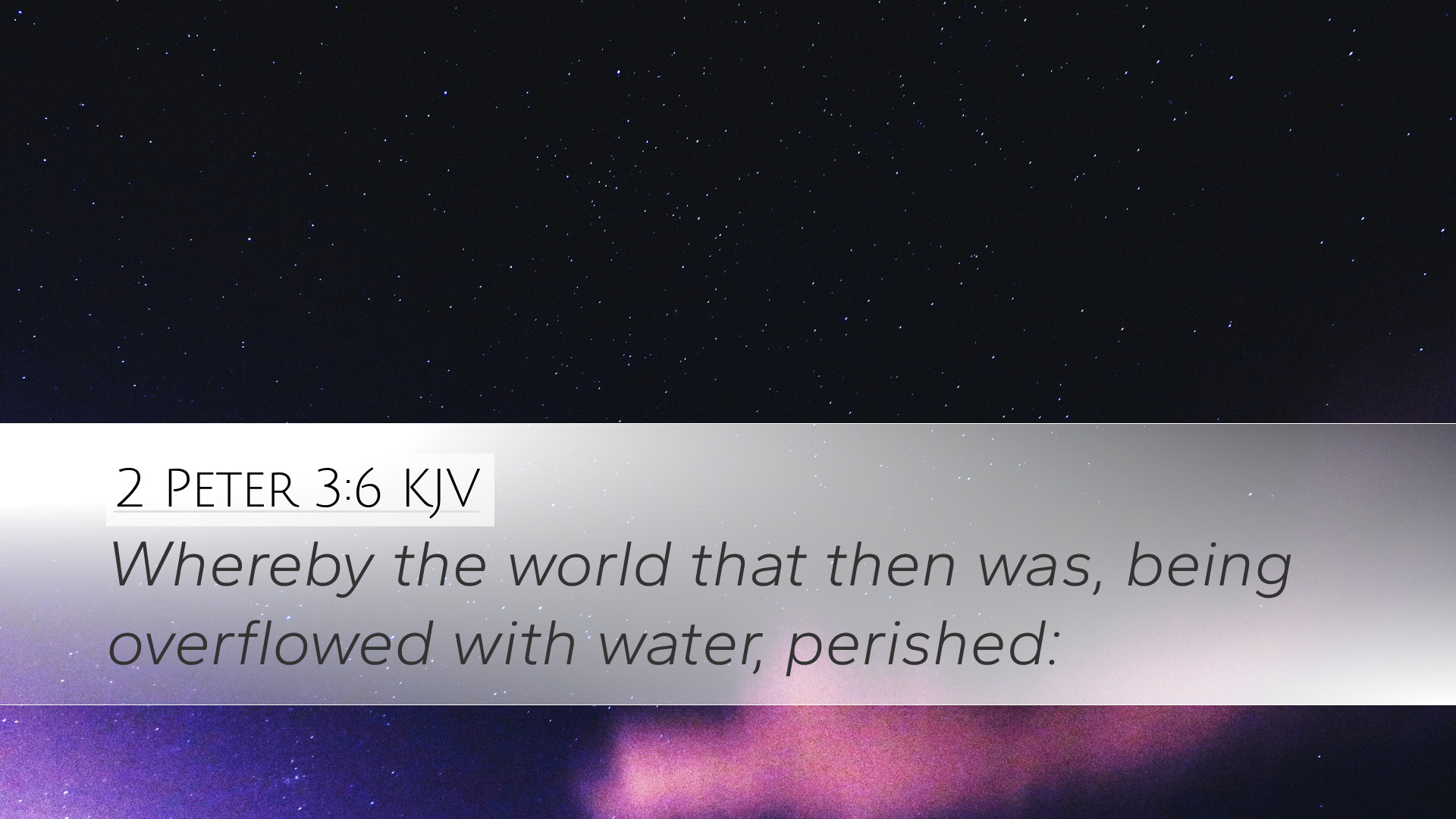Old Testament
Genesis Exodus Leviticus Numbers Deuteronomy Joshua Judges Ruth 1 Samuel 2 Samuel 1 Kings 2 Kings 1 Chronicles 2 Chronicles Ezra Nehemiah Esther Job Psalms Proverbs Ecclesiastes Song of Solomon Isaiah Jeremiah Lamentations Ezekiel Daniel Hosea Joel Amos Obadiah Jonah Micah Nahum Habakkuk Zephaniah Haggai Zechariah Malachi2 Peter 3:6
2 Peter 3:6 KJV
Whereby the world that then was, being overflowed with water, perished:
2 Peter 3:6 Bible Commentary
Commentary on 2 Peter 3:6
Verse Context: 2 Peter 3:6 states, "By which the world that then was, being overflowed with water, perished." This verse refers back to the historical event of the Flood, which serves as a divine judgment and a significant lesson in God's relationship with His creation.
Matthew Henry's Commentary
Matthew Henry emphasizes the seriousness of divine judgment manifest in the flood. He notes that the Flood not only serves as a historical marker of God's wrath against rampant wickedness but also reveals God's mercy in preserving Noah and the righteous.
Henry identifies the phrase "the world that then was" as a reminder that the earth exists under God's authority and can be judged according to His will. He argues that God's justice is portrayed through the destructive flood, which cleansed the earth of its wickedness, illustrating that God will not overlook sin.
Albert Barnes' Commentary
Albert Barnes adds depth by discussing the purpose of the Flood. He asserts that the Flood was not merely a local event but a global demonstration of God's power and righteousness. Barnes explains that the totality of the destruction emphasizes the completeness of God's judgment against the uncontrollable depravity of humanity.
- Judgment Propel: Barnes posits that Jude 1:14-15 also refers to Enoch's prophecy about the end times, linking back to the Flood—a precursor to the ultimate judgment.
- Theological Implications: Barnes highlights how the Flood creates an illustration for the subsequent coming judgment. Just as the floodwaters destroyed the wicked, so shall the final judgment obliterate unrepentant sinfulness.
Adam Clarke's Commentary
Adam Clarke provides a more theological perspective on this verse, suggesting that it speaks to the nature of God's unfolding plan throughout history. Clarke notes that Noah's construction of the ark and the resultant flood are both symbols of hope and warning for humanity.
Clarke further accentuates the concept of the 'old world,' explaining that the destruction serves as an archetype of God's ability to renew and to judge. He remarks on the purposefulness of God's actions, emphasizing that the Flood should not only be seen as punishment but also as a means of preserving a remnant for future generations.
Theological Reflections
This verse offers profound theological reflections that resonate especially with pastors and theologians:
- Judgment and Mercy: Together, these themes illustrate a dichotomy that defines God's character as both just and merciful, capturing the essence of the Gospel narrative.
- Historical Significance: The Flood serves as a template for interpreting both past and future judgments, encouraging readers to examine their lives in the light of God's righteous standards.
- Encouragement for Righteous Living: The narrative of Noah's preservation amidst judgment serves as an encouraging reminder for Christians about the faithfulness of God to His promises.
Conclusion
In summary, 2 Peter 3:6 serves as a reminder of God's sovereign authority over creation and His commitment to righteousness. Commentary from historical theologians reflects on the significance of the Flood as both a lesson in divine justice and a profound act of mercy, underscoring the necessity for humanity to live in accordance with God's will.


